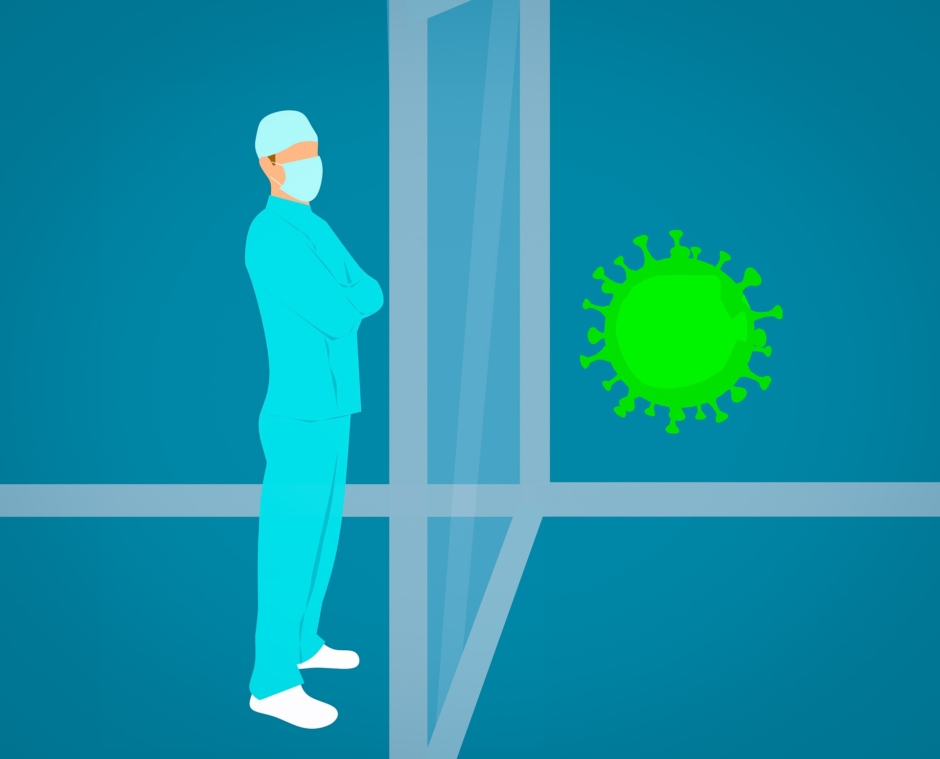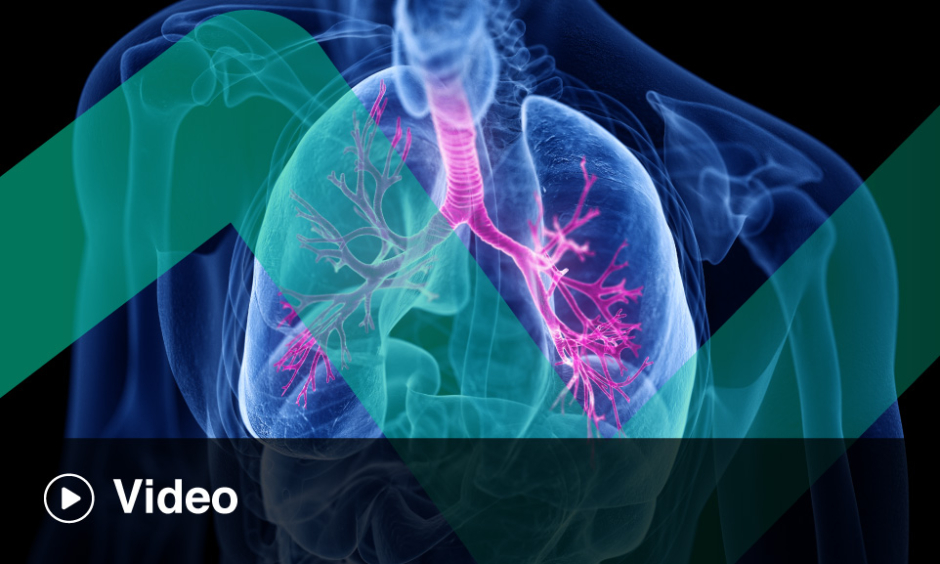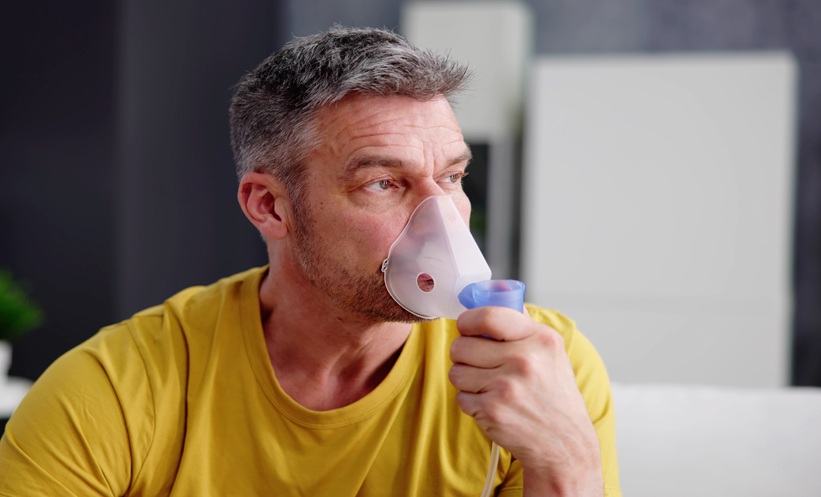Written by Michael W. Hess, MPH, RRT, RPFT | Western Michigan University Homer Stryker M.D. School of Medicine, Kalamazoo, Michigan, USA![]()
The novel coronavirus pandemic has highlighted many of the structural inefficiencies and shortcomings of the modern USA healthcare systems. News accounts have been replete with references to shortages of supplies, equipment, and medications. However, these barriers also represent lessons to be learned, and opportunities to improve the healthcare system on the other side of the crisis. This is particularly true with members of an often-overlooked discipline: the respiratory therapists who manage invasive ventilation and other therapies critical to optimal COVID-19 treatment, and who hold the clinical expertise to help COVID-19 survivors thrive in their post-intensive care unit lives.
Respiratory care is a relatively young specialty, which contributes to its low profile. Born of Dr Edwin R. Levine’s post-surgical inhalation therapy specialists at the University of Chicago Hospital in the late 1940s,1 the profession came of age during the polio era with the management of whole-body negative pressure ventilators (more commonly known as ‘iron lungs’). Subsequent decades have, of course, seen remarkable advancement in pharmaceutical technology, medical gas delivery, and a variety of other therapies to address acute and chronic pulmonary conditions. However, respiratory therapists remain the only allied health profession specifically trained in the diagnosis, treatment, and evaluation of these pathologies.
The Respiratory Therapists’ Role in Critical Care
The nature of COVID-19 has emphasised the skills perhaps most closely associated with the respiratory therapist: monitoring, assessing, and managing patients receiving invasive mechanical ventilation. Unlike their predecessors from the polio era, which essentially only substituted for the patients’ own weakened musculature, modern ventilators use positive pressure to actively drive gas into the lungs.2 This provides the clinician with a much broader array of options for both ventilation and oxygenation, thus facilitating the treatment of a wider variety of lung pathologies. Unfortunately, this also invites a larger number of complications, because the physics of positive pressure ventilation essentially run counter to normal lung mechanics, and research surrounding best practices for ventilating the COVID-19 lung evolves almost daily. Prevention, or at least minimisation, of ventilator-associated lung injury is therefore a paramount concern for intensive care unit staff.
Enter the respiratory therapist. With the physician intensivist responsible for multiple patients and nursing staff tasked with administering the wide variety of medications and physiological monitors that are part and parcel of intensive care unit care, the respiratory therapist is able to focus on the interactions between the patient and the machine, thereby reducing the workload of already-strained healthcare peers. This includes ensuring the machine works in as much harmony with the patient’s breathing pattern as possible, enabling a lighter level of sedation to be used. It includes finding the balance between sufficient gas delivery to enable proper exchange of oxygen and carbon dioxide within the alveoli and delivering a volume that may over-distend those alveoli, causing inflammation and the damage that leads to the dreaded ventilator-associated lung injury, or impede blood flow in and out of the thoracic space, leading to cardiac or neurological impacts.3,4 Additionally, it includes ensuring any underlying conditions the patient has, such as asthma or chronic obstructive pulmonary disease, continue to be appropriately managed during the acute episode.
As complex as the patient-ventilator system is, it is just the beginning of the therapist’s responsibility. Working in close concert with the rest of the care team (particularly the nursing staff), respiratory therapists have to ensure mechanical ventilation does not cause damage outside the lungs either. The interface between patient and machine, most commonly an endotracheal tube (ETT), provides almost as many opportunities for complication as the ventilator itself.5 Because gas follows the path of least resistance, the trachea must be sealed in order to force the lungs to inflate. Most adult ETT accomplish this by using an inflatable cuff near the tip. If the cuff is not inflated enough, secretions from the upper airways may migrate into the lungs and provide an ideal breeding ground for bacteria, leading to pneumonia. If the cuff is inflated too much, the excess pressure may be transmitted to the tracheal epithelium, causing permanent pressure damage to that tissue.5 Pressure damage is also a concern around the lips and gum because these are locations where the ETT is often anchored (with tape, fabric ties, or a specialised device). Frequent monitoring of these sites, and adjustment as necessary, is absolutely critical for patient safety and tissue integrity.
COVID-19 has added additional layers of complexity to this monitoring and assessment. Many facilities report improving oxygenation by placing patients in the prone position both before and during mechanical ventilation.6 However, there are also reports that attempting to prone prior to mechanical ventilation is leading to marked transient hypoxaemia, which requires swift respiratory intervention.7 Proning during mechanical ventilation is a relatively high-risk procedure requiring many members of the care team to work in concert in order to ‘log roll’ a patient who is sedated, thus uncooperative, without disturbing any of the myriad lines and catheters keeping that patient alive, including the ETT. The therapist must immobilise the tube during the entire rotation, as well as minimise any pressure points on the patient’s face as they lay on the tube for hours at a stretch.
The nature of many respiratory care procedures places many respiratory therapists at increased risk for exposure, as well. Sedation, as well as the mere presence of the ETT, prevents many ventilated patients from effectively coughing spontaneously, necessitating the suctioning of secretions from the airways. The process of suctioning may provoke a strong cough, overpowering the seal of the ETT cuff and allowing virus-laden aerosols to escape into the atmosphere. Intubation itself is generally considered an aerosol-generating procedure, and respiratory therapists are key members of intubation teams stationed at the head of the bed (if not performing the procedure directly), exposing them to multiple patients per shift. Respiratory therapists also face an unknown risk from asymptomatic or untested patients, as many inhaled medications are delivered via nebuliser (another aerosol-generating procedure with uncertain risk) and may induce coughing (particularly concerning in pre-symptomatic patients). Despite these concerns, respiratory therapists remain at the front lines of the crisis and provide invaluable experience and knowledge in the acute care setting.
Respiratory Therapists in the Post-COVID-19 World: An Expanded Role
While many of the lessons of this pandemic remain as yet unlearned, the post-COVID-19 world will likely also benefit from greater engagement of respiratory therapists. Due to the vagaries of healthcare reimbursement, the vast majority of respiratory therapists are currently stationed inside hospital walls; most of the remainder work in relatively small subspecialties such as diagnostics and pulmonary rehabilitation. However, there is a growing contingent of respiratory therapists trained in chronic disease management, tobacco cessation, and other public health-related fields traditionally occupied by other types of clinicians, as well as other venues in the post-acute space (such as skilled nursing facilities). These respiratory therapists are able to integrate their specialised pulmonary expertise into these nontraditional roles, to the significant benefit of their patients. While the long-term sequelae of COVID-19 are yet not known, preliminary reports suggest a significant degree of lung function decline after recovery.8 Similarly, longitudinal studies from what is so far generally considered the most analogous pathology, acute respiratory distress syndrome, indicate persistent activity limitation and quality of life issues years after the initial insult.9 This would indicate an expansive need for rehabilitation and respiratory support therapies over the next decade and beyond.
The personnel shortages throughout healthcare also highlight the capability of respiratory therapists to provide many of the services from which they have previously been excluded. With many states relaxing administrative barriers and the federal government liberalising reimbursement policies, respiratory therapists now have an opportunity to demonstrate effectiveness providing telehealth services. Telehealth is coming of age in the age of distancing and quarantine, and respiratory therapists are eminently qualified to provide patient education, tobacco cessation, and similar services remotely. In addition, the idea of an “advanced practice respiratory therapist,” similar to a nurse practitioner or physician assistant, is gaining traction in an age when primary care providers are in short supply even outside of pandemic conditions. Empowering the development of these initiatives removes some of the burden from clinicians otherwise overwhelmed with nonpulmonary patient care responsibilities and strengthens the resilience of healthcare systems.
Conclusion
The COVID-19 crisis has brought new attention to the longstanding importance of integrating respiratory therapists more fully alongside their bedside peers. One of the key lessons that must be learned from this pandemic is that respiratory therapists provide essential yet underutilised services throughout the continuum of care, alongside colleagues in nursing, medicine, and many other disciplines. Efficient, patient-centred models of care and public health in the post-COVID-19 world should include enhanced roles for respiratory therapists in the USA and beyond, in order to facilitate collaboration, communication across the care continuum, and optimal outcomes for all. There is nothing more important to life than breath, and patients with breathing issues deserve nothing less than expert, specialised care to optimise their quality of life.
References
- American Association for Respiratory Care (AARC). Timeline and History: The History of Respiratory Therapy. 2016. Available at: https://www.aarc.org/aarc/timeline-history/. Last accessed: 7 April 2020.
- Thomson A. The role of negative pressure ventilation. Arch Dis Child. 1997;77(5):454-8.
- Hyzy R, Slutsky A. Ventilator-induced lung injury – UpToDate. 2019. Available at: https://www.uptodate.com/contents/ventilator-induced-lung-injury. Last accessed: 9 April 2020.
- Mahmood SS, Pinsky MR. Heart-lung interactions during mechanical ventilation: the basics. Ann Transl Med. 2018;6(18):349.
- Pacheco-Lopez PC et al. Complications of airway management. Respiratory Care. 2014;59(6):1006-21.
- Anesi G. Coronavirus disease 2019 (COVID-19): Critical care issues. 2020. UpToDate. Available at: https://www.uptodate.com/contents/coronavirus-disease-2019-covid-19-critical-care-issues?source=related_link. Last accessed: 9 April 2020.
- Malhotra A, Kacmarek RM. Prone ventilation for adult patients with acute respiratory distress syndrome – UpToDate. 2018. Available at: https://www.uptodate.com/contents/prone-ventilation-for-adult-patients-with-acute-respiratory-distress-syndrome. Last accessed: 9 April 2020.
- South China Morning Post. Coronavirus: some recovered patients may have reduced lung function and are left gasping for air while walking briskly, Hong Kong doctors find | South China Morning Post. 2020. Available at: https://www.scmp.com/news/hong-kong/health-environment/article/3074988/coronavirus-some-recovered-patients-may-have. Last accessed: 7 April 2020.
- Chiumello D et al. What’s next after ARDS: long-term outcomes. Respir Care. 2016;61(5):689-99.







